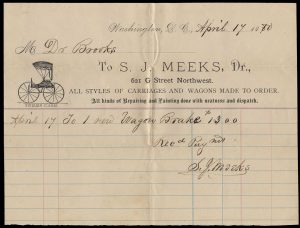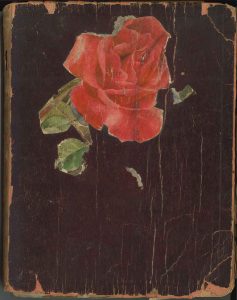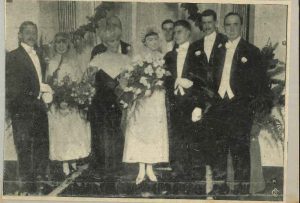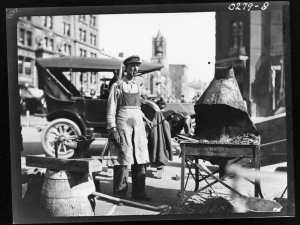I recently presented on our Washington, D.C.-related collections at the Conference on High Impact Research held at American University here in the District. I was asked simply to talk about collections in the Archives related to Washington, D.C. The audience was an interdisciplinary group of academics at American University. As a participant, I learned about collections at the DC Public Library, George Washington University, and American University, but I also compiled a list of our own D.C.-related collections, something we surprisingly hadn’t done until now. Of our 431 manuscript collections, 13 have materials related to D.C. Our D.C. collection materials date back to the eighteenth century with the Brooks-Queen Family Collection, and extend into the 1990s with the Paul Philips Cooke Papers.

We like to say that “if it’s Catholic and it’s national, we probably have it,” because we have so many collections related to national Catholic history. However, we also have some local records of interest to researchers seeking insight into local Catholic life. The records of the Society of St. Vincent de Paul of Washington, D.C., for example, document the efforts of this Catholic institution to attend to the spiritual and material wants of the poor in the city from the 1940s through the 1960s. Other Catholic records include those of Catholic Charities of Washington, D.C. and the Washington Catholic Evidence Guild.

Our local materials are not exclusively Catholic. The Brooks-Queen collection is comprised of materials related to the founding families of Washington, D.C.’s Brookland neighborhood. Another Brookland-related collection is the Cecilia Parker Woodson Collection, which contains hundreds of letters from Woodson’s husband and daughter to Woodson, who lived with her family in Brookland in the early twentieth century.

Nor are our local materials exclusively documents. The archives has digitized more than a thousand images from the collection of Terence Vincent Powderly, most of them related to Washington, D.C. and the vicinity. Better known as the head of the Knights of Labor, a union whose membership swelled under his leadership in the 1880s, Powderly was also an amateur photographer. Powderly lived in Washington, D.C. in the early twentieth century, when he served in a variety of bureaucratic posts.

Powderly photographed a great variety of subjects bearing on social, economic, and political life at the turn of the century in both Europe and America, but of the 1300 images that are digitized, 900 are related to Washington, D.C., where Powderly lived from 1897 until his death in 1924.
For a full list of the Washington, D.C.-related collections, see:

I need to come in and investigate the Cecelia Parker Woodson Collection. I’ve reviewed the Theodore Holm and Antoinette Margot collections, but I never saw Woodson’s material. – John Feeley
John, it’s a great collection. We are digitizing it, when it’s up, I will let you know. Until then, come visit and have a look! Maria